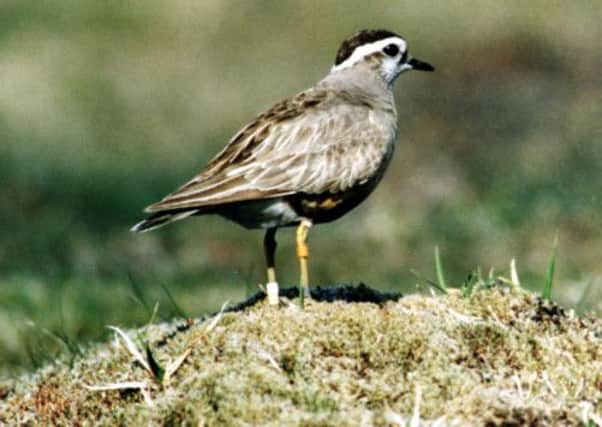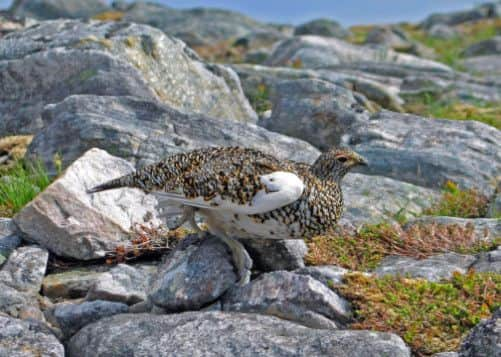Scottish climate change could wipe out rare birds


Ptarmigan, dotterel and snow bunting have already been forced to the tops of the highest Scottish peaks as global warming has shrunk the cooler high- altitude habitat which they need to survive.
Experts yesterday published a new report highlighting numerous accepted predictions that climatic conditions in the birds’ territory will have altered so much that within 100 years they will be squeezed out completely because there will be nowhere left for them to go.
Advertisement
Hide AdAdvertisement
Hide AdThe latest warning was made in the Terrestrial Biodiversity Climate Change Impacts Report Card, the first assessment of its kind in the UK bringing together research by 40 scientists to produce an overview of the affects of climate change on biodiversity now – and predictions for the future.


Environmental groups in Scotland, including Scottish Natural Heritage (SNH) which helped to create the report card, voiced grave concerns over the affect of the changing climate on the birds’ niche Highlands habitat.
Professor Des Thompson, SNH principal advisor on biodiversity, stressed that “generations of study” were needed to get a clear picture of the effect of climate change on the Scottish mountains.
But he added: “From what we know, yes, there have been changes and, yes, they appear to have been profound, but we need further time to appreciate all the factors at work here. A 30- or 50-year period of study is in effect a very small snapshot but what is extraordinary is seeing how this habitat has changed over quite a small timeframe.
“This is a specialised landscape for species which have evolved to deal with it, but there have been significant changes over one generation. It seems likely that these changes will continue and become much more profound in the next 50 years.”
The report also predicted that species “most associated with cool temperatures are likely to be most vulnerable to climate change, particularly those with a narrow thermal niche”.
“For example, ptarmigan, dotterel and snow bunting are currently restricted to the summits of the highest Scottish mountains and suitable climatic conditions will disappear by the end of the century under many standard climate change projections.”
RSPB Scotland, which works with SNH on monitoring bird populations, is about to begin a study later this year exploring the impact of global warming on dotterels.
Advertisement
Hide AdAdvertisement
Hide AdJim Densham, a climate specialist with the charity, said: “The report card shows a whole range of impacts that a changing climate could have on our precious birds and wildlife. Some birds, such as the Slavonian grebe, ptarmigan and dotterel may disappear altogether from Scotland [because] future conditions may not suit their needs.
“Our research work is currently attempting to learn more about the fortunes of these species and the unique habitats they require to survive.”
High level risk of extinction
Dotterels were widespread across Britain until they were persecuted for their feathers, which were prized by fishermen for making trout flies.
There are currently thought to be between 510 and 750 breeding pairs across the UK. During the summer they are only seen on the tops of Scotland’s mountains.
Dotterels are unusual because unlike most bird species the adult females are brighter than the males, which also take on the typically female role of incubating the eggs and raising the young.
The snow bunting is the most northerly breeding songbird on earth.
They are so scarce in the UK that they have been placed on The Royal Society for the Protection of Birds’ “Amber List”.
Estimated populations are thought to be between 70 and 100 breeding pairs in the UK.
Advertisement
Hide AdAdvertisement
Hide AdPtarmigans are plump gamebirds which live year-round in the Arctic-like landscape of the highest Highland mountains.
There are thought to be around 10,000 breeding pairs in Scotland. They are harder to spot in winter when they become totally white except for their tails and a black patch around their eyes. In summer their plumage is grey, brown and black.